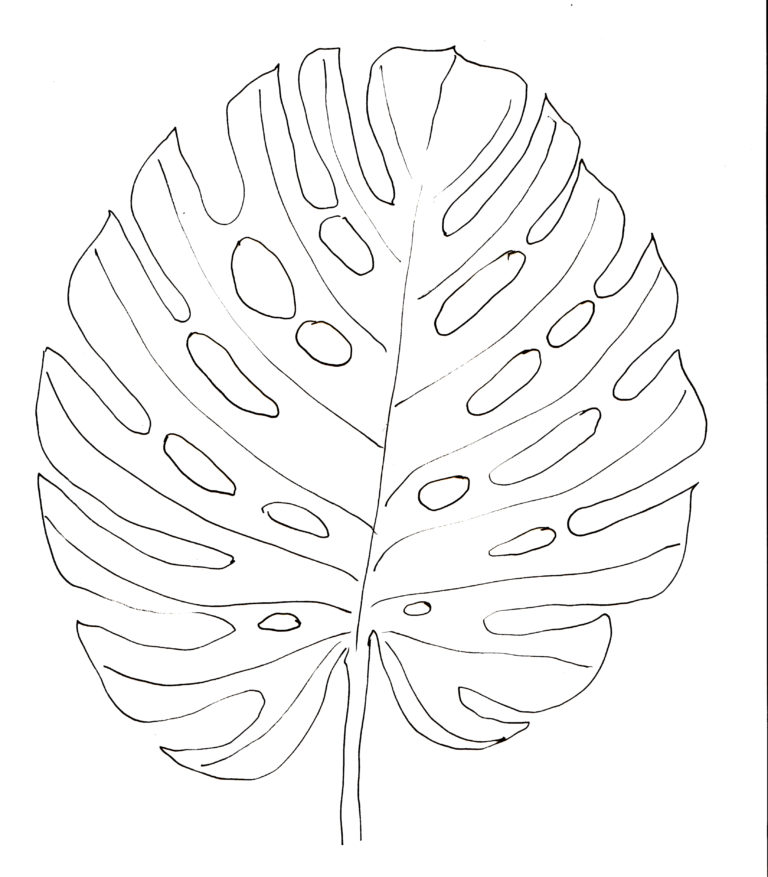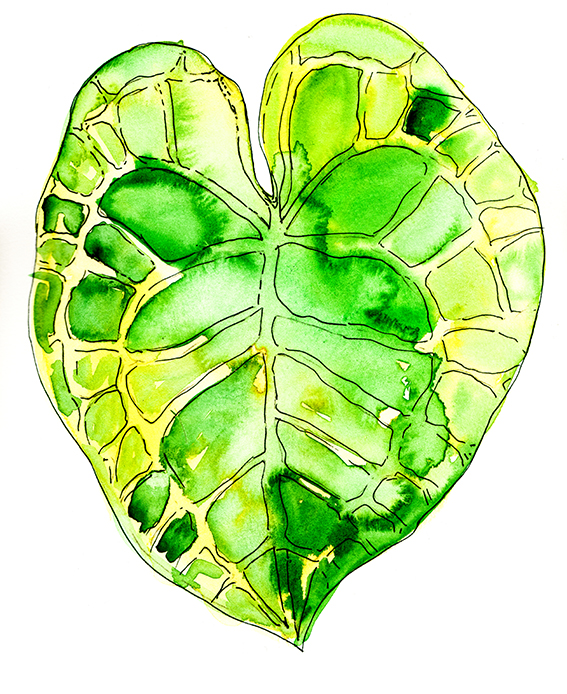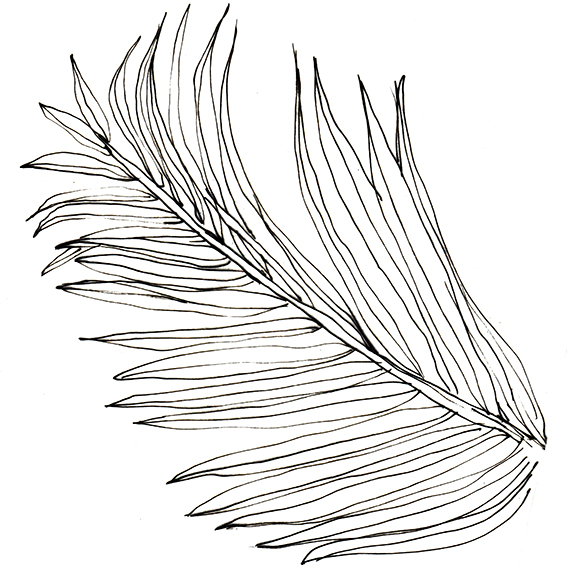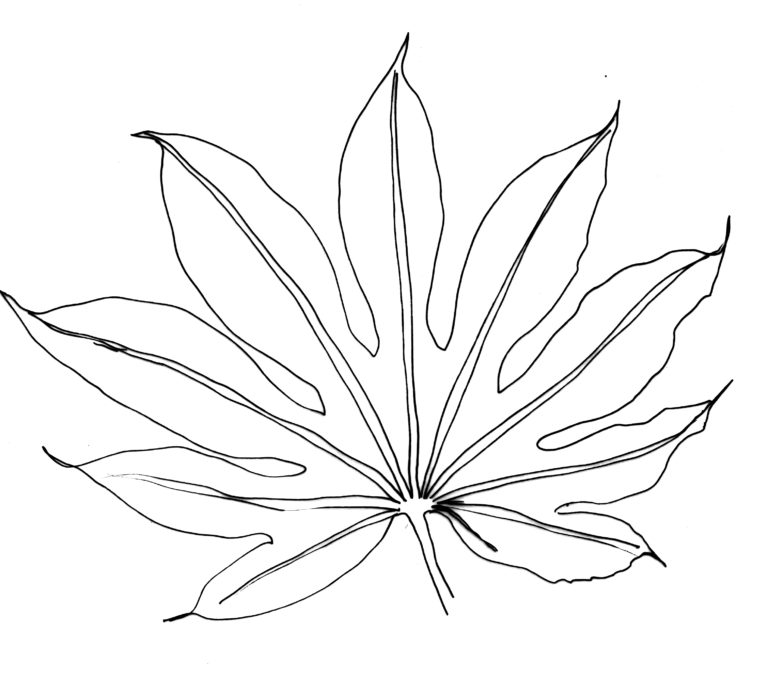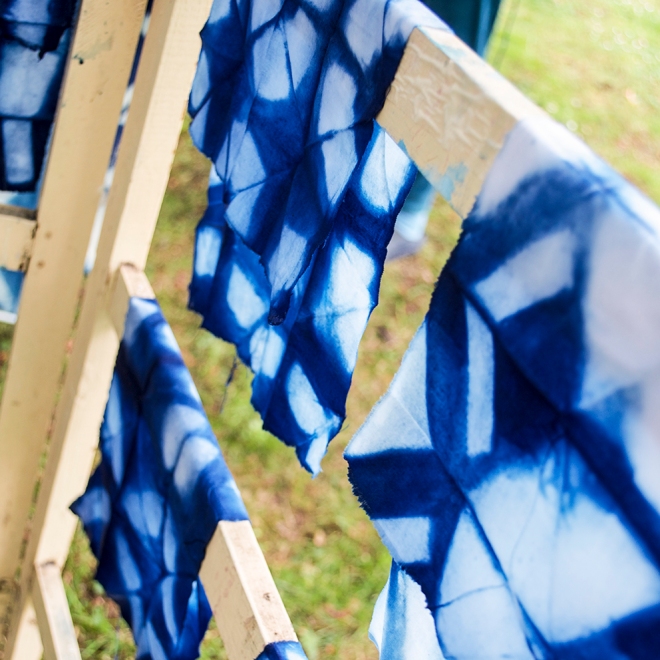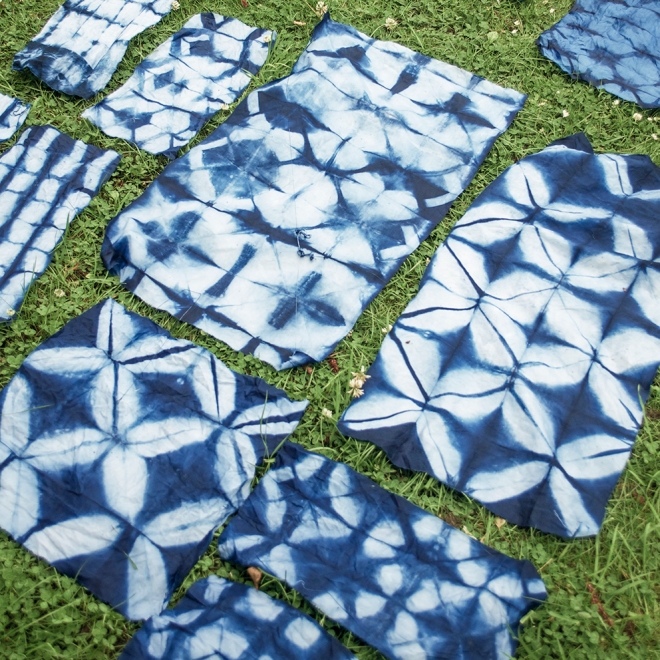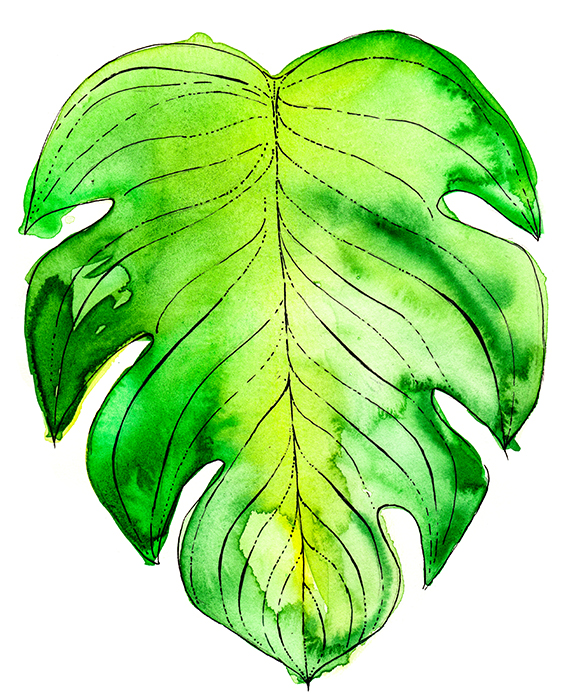
Leaves are my go-to shape for doodling and have been a constant subject for my drawing over the years. The variety, the curves, the veins, the lush texture all provide a rich resource for artists and illustrators.
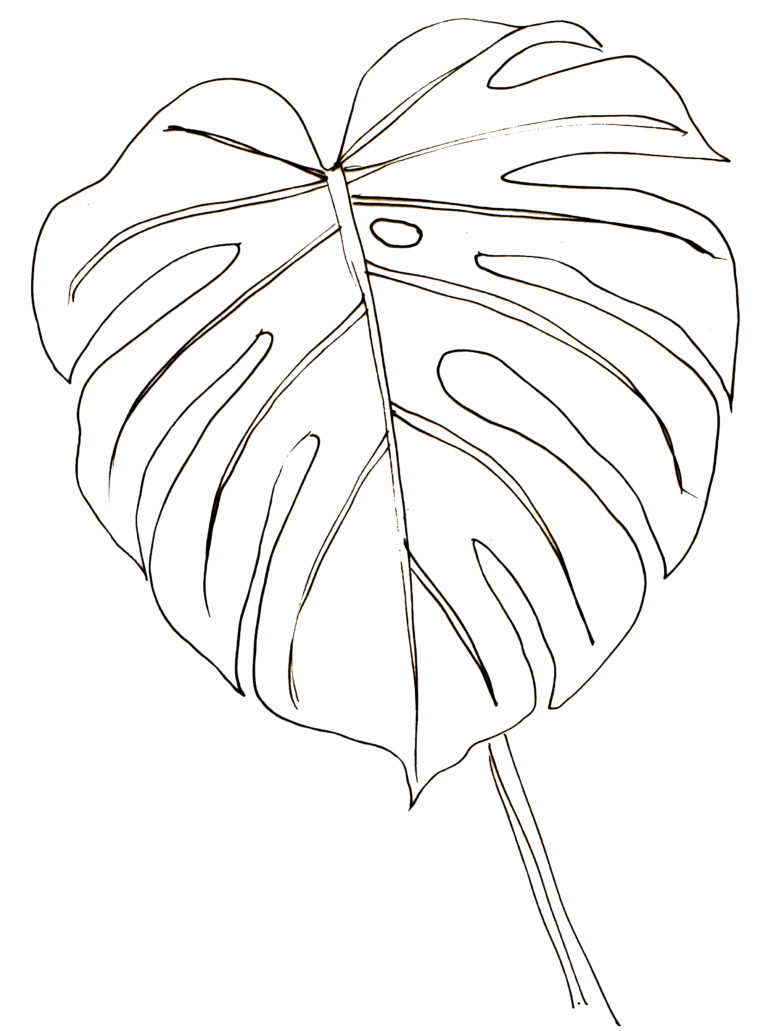
I recently visited the Botanic Gardens in Cambridge. Among the various planting schemes and a lovely gaggle of ducks (I know that’s the collective noun for geese but you didn’t see these guys), the gardens also boasts an impressive glasshouse where plants from around the world are nurtured and displayed. The rainforest area is fabulous and I was struck by its enormous leaves that cover such large areas.
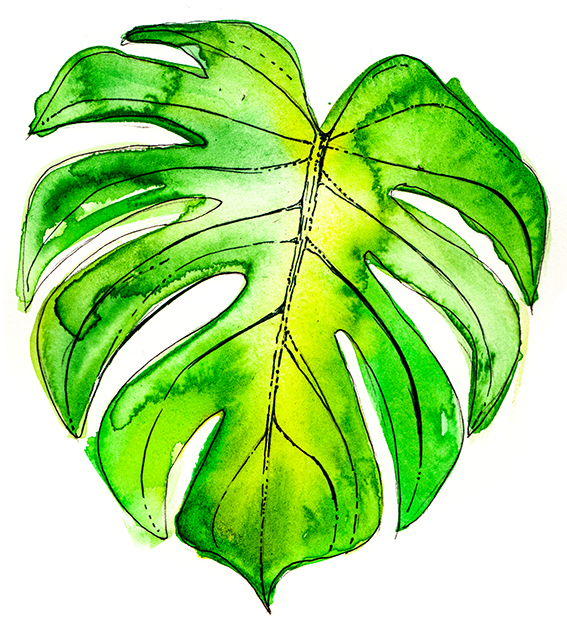
The nearest things we get to this is our household plants. So I thought I’d get busy with some watercolour illustrations and black and white sketches of Monstera, Aralia, Alocacia and Cycad.
